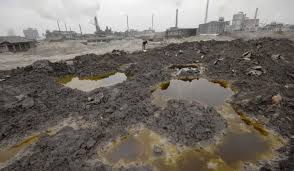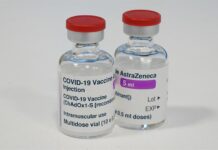By Muhammad Luqman
Soil pollution poses a serious threat to agricultural productivity, food safety, and human health, but far too little is known about the scale and severity of that threat, warns a new FAO report.
Industrialization, war, mining and the intensification of agriculture have all left a legacy of soil contamination across the planet, while the growth of cities has seen soil used as a sink for ever greater amounts of municipal waste, according to the report.
“Soil pollution affects the food we eat, the water we drink, the air we breathe, and the health of our ecosystems,” the document reads.
But even though agricultural intensification, industrial output, and urbanization continue at a rapid pace, no systematic assessment of the status of soil pollution at global level has ever been undertaken.
Studies conducted so far have largely been limited to developed economies, so there are massive information gaps regarding the full nature and extent of the problem, according to FAO’s survey of existing scientific literature.
For example, in Australia, some 80,000 sites are now estimated to suffer from soil contamination. China has categorized 16 percent of all its soils — and 19 percent of its agricultural soils — as polluted. There are approximately 3 million potentially polluted sites in the European Economic Area and the West Balkans. In the United States, 1,300 sites appear on that country’s Superfund National Priorities list of pollution hot spots.
Numbers like these help us understand the types of dangers pollution poses to soils, but “do not reflect the complete extent of soil pollution around the world, and highlight the inadequacy of available information and the differences in registering polluted sites across geographic regions.
Soil pollution often cannot be visually perceived or directly assessed, making it a hidden danger — with serious consequences.
It impacts food security both by impairing plant metabolism and thus reducing crop yields, as well as by making crops unsafe for consumption. Pollutants also directly harm organisms that live in soil and make it more fertile.
And of course soil contaminated with dangerous elements (for example, arsenic, lead, and cadmium), organic chemicals like PCBs (polychlorinated biphenyls) and PAHs (polycyclic aromatic hydrocarbons) or pharmaceuticals such as antibiotics or endocrine disruptors pose serious risks to human health.
Industrial activities including mining, smelting and manufacturing; domestic, livestock and municipal wastes; pesticides, herbicides, fertilizers used in agriculture; petroleum-derived products that are released into or break-down in the environment; fumes generated by transportation — all contribute to the problem.
So-called “emerging pollutants” are also a growing concern. These include pharmaceuticals, endocrine disruptors, hormones and biological pollutants; “e-waste” from old electronics; and the plastics that are nowadays used in almost every human endeavour.
Production of chemicals grown rapidly in recent decades and is projected to increase annually by 3.4 percent until 2030. Non-OECD countries will be much greater contributors in the future.
In 2015, the European chemical industry produced 319 million tonnes of chemicals. Of these, 117 million tonnes (MT) were deemed hazardous to the environment.
Global production of municipal solid waste was around 1.3 billion tonnes per year in 2012; it is expected to rise to 2.2 billion tonnes annually by 2025.
In many world regions, levels of persistent organic pollutants in human milk are significantly above those considered safe, with a higher incidence in India and in some European and African countries.
Certain low- and middle-income countries have notably increased their use of pesticides over the last decade. Bangladesh, for example, did so by four times, Rwanda and Ethiopia by over six times, and the Sudan by ten times.
Global manure production increased 66 percent between 1961 and 2016, from 73 to 124 MT. The volume of manure applied to soils grew from 18 to 28 MT, and the amount of manure left on pasture increased from 48 to 86 MT. Manure can contain high amounts of heavy metals, pathogen organisms and antibiotics.
Soils near roads have high levels of heavy metals, hydrocarbons, and other pollutants, posing a threat when food production occurs in adjacent areas or grazing on roadside soils takes place.
Approximately 110 million mines or other unexploded pieces of ordnance are scattered across 64 countries on all continents, remnants of wars that can have deadly consequences for farmers and which can release heavy metals through weathering.
Almost all soil in the northern hemisphere contains radionuclides in higher concentrations than the background level — even in remote areas, as a result of fallout from atmospheric testing of nuclear weapons and radiological events like the Chernobyl accident.
M















